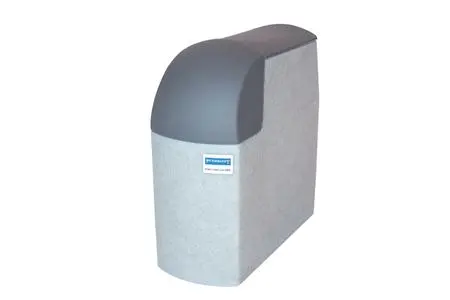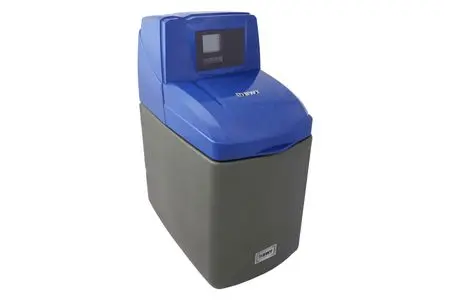 Free delivery on orders over £75 ex VAT
Free delivery on orders over £75 ex VAT Free click & collect from branches nationwide
Free click & collect from branches nationwideEverything you Need to Know about Water Softeners in 2023
If you live in London, Bedfordshire, Berkshire, Cambridgeshire, Essex, Kent, Surrey, or any other UK county with hard water (A.K.A well over 60% of the UK), you’ll understand the annoyance of having to deal with it.
We’re talking sub-par dishwashing, streaky bathtubs and showers, and kitchen appliances and pipes constantly under attack from limescale build up.
Problematic hard water has resulted in skyrocketing water softener sales in recent years, and for good reason. Water softeners are cheaper than ever, smaller than ever, and more efficient than ever – meaning those who buy them can enjoy spotless dishwashing, silkier showers, and more reliable appliances.
If you’re thinking of installing a water softener to enhance your home, our helpful guide will take you through the main types of water softener available, and important considerations whilst buying.
How does a Water Softener work?
It’s important to know what a water softener does - and how it works - if you’re going to get one in your home.
Hard water is ‘hard’ due to the minerals found in it. Calcium and magnesium, the two main culprits, cause limescale when ran through any kind of pipe or appliance. The amount of limescale increases as more hard water runs through the system, causing mineral build ups which reduce the efficiency of any water-using appliance.
Most water softeners solve this using a process called ion exchange. Ion exchange replaces the magnesium and calcium ions with sodium chloride via a special resin. This leaves behind pure water without any of the ‘hard’ chemicals.
Benefits of a Water Softener
- Cheaper bills – Soft water helps remove any existing limescale, meaning pipes will flow better and heating systems won’t have to work as hard.
- Appliance longevity – Appliance functionality won’t be impeded by build-up, providing better results and a longer working life.
- Soft on skin – Soft water feels luxurious, and water softeners remove the minerals that irritate skin conditions such as eczema.
- Economical – Soap lathers much better in soft water, meaning you’ll use less soap, washing up liquid, etc.
- Easy cleaning – No streaks, scum or residue marks results in spotless kitchens and bathrooms with less cleaning.
Types of Water Softener
The main two types of water softener available are electric water softeners, and non-electric water softeners.
Both types ultimately deliver equal results in terms of water softening. The main difference is that electric systems work on an electric timer, whereas non-electric systems use a meter that turns as water flows through it.
Non-Electric Water Softeners
Non-electric water softeners, such as the Monarch Ultra Compact Non Electric, can be more efficient when utilised correctly. This is because they don’t use any electricity – saving on bills, and improving reliability.
As they can’t be programmed, non-electric models begin regenerating water as soon as the supply is low. This could be at any time – even mid shower, or during a dishwasher cycle. During regeneration, the water will briefly return to hard water.
This is not a problem for most people – but it may be more of an issue for households that use a lot of water each day. Twin tank water softeners are available which can help negate this issue.

The Benefits:
- No electricity means slightly lower running costs
- Generally more durable – no electric parts exposed to damp, salty environments
- Small, compact design
- Can be installed very easily
- Not affected by power cuts
Potential Downsides:
- Cannot be programmed – starts regenerating when water is low, which could be at any time
- Low water pressure may be experienced during regeneration
- Non-electric sensors could result in an overflow if particles were to get stuck in the shut-off valve
- Slightly more upkeep is needed
Electric Water Softeners
Electric water softeners, such as the BWT WS 355, are functionally similar to non-electric systems but utilise a power supply to enable regeneration scheduling and other helpful features depending on the model you buy.

The Benefits:
- Allows scheduling, meaning regeneration can happen at a convenient time rather than whenever the water runs out
- Only uses a tiny amount of electricity most of the time
- Far less likely to overflow, due to electronic sensors
- Most systems have ‘vacation mode’, meaning no electricity will be used regenerating water whilst you’re away
- Typically cheaper to buy than non-electric models
Potential Downsides:
- Requires a power supply
- Many electric models are slightly larger
- A little more complicated to install and set up
What to Consider when Installing a Water Softener
Once you’ve decided on the type of water softener best suited to meet your demands, there’s a few important considerations to keep in mind during the fitting process.
Water Softener Tank Size
Water softeners are available with a range of different tank sizes in order to provide your household with enough soft water.
A rough tank size requirement can be calculated by multiplying the number of people in your household by 75 (the average amount of gallons used per person, per day) – then multiply this number by the GPG (grains per gallon) of hardness minerals in your water supply.
For example, a four-person household uses around 300 gallons per day (4 x 75). If the water has 10 GPG, 3,000 GPG of minerals will need filtering each day.
Dual/twin Tank Systems
If your household uses a lot of water, a dual tank system might be for you. Dual tanks allow seamless switching from one tank to another – one tank can supply the soft water whilst the other regenerates. This means there’s no loss of soft water during regeneration.
Existing Plumbing
Bear in mind that a water system with larger pipes will demand a water softener able to process water much quicker. If your water softener can’t keep up with your plumbing, you may find significant drops in water pressure or water that isn’t fully softened.
Available Space
Modern water softener systems are more compact than ever, and shouldn’t take up too much space under your sink. That being said, it’s important to ensure your under-sink plumbing and storage allows enough room for the tank. This is especially true when buying water softeners with larger tanks.
Many water softeners can be installed elsewhere - such as in the garage or in a different cupboard. A professional installer can determine whether this is viable for your water system.
Water softeners can make a house far more efficient, making them a worthwhile investment for anyone who lives in a hard water area. The range of health and lifestyle benefits is not to be overlooked, either.
City Plumbing stocks a varied range of water softeners to meet any requirements. All the models we stock have successfully passed industry standard testing, and come with robust warranties to ensure years of trouble-free service.

